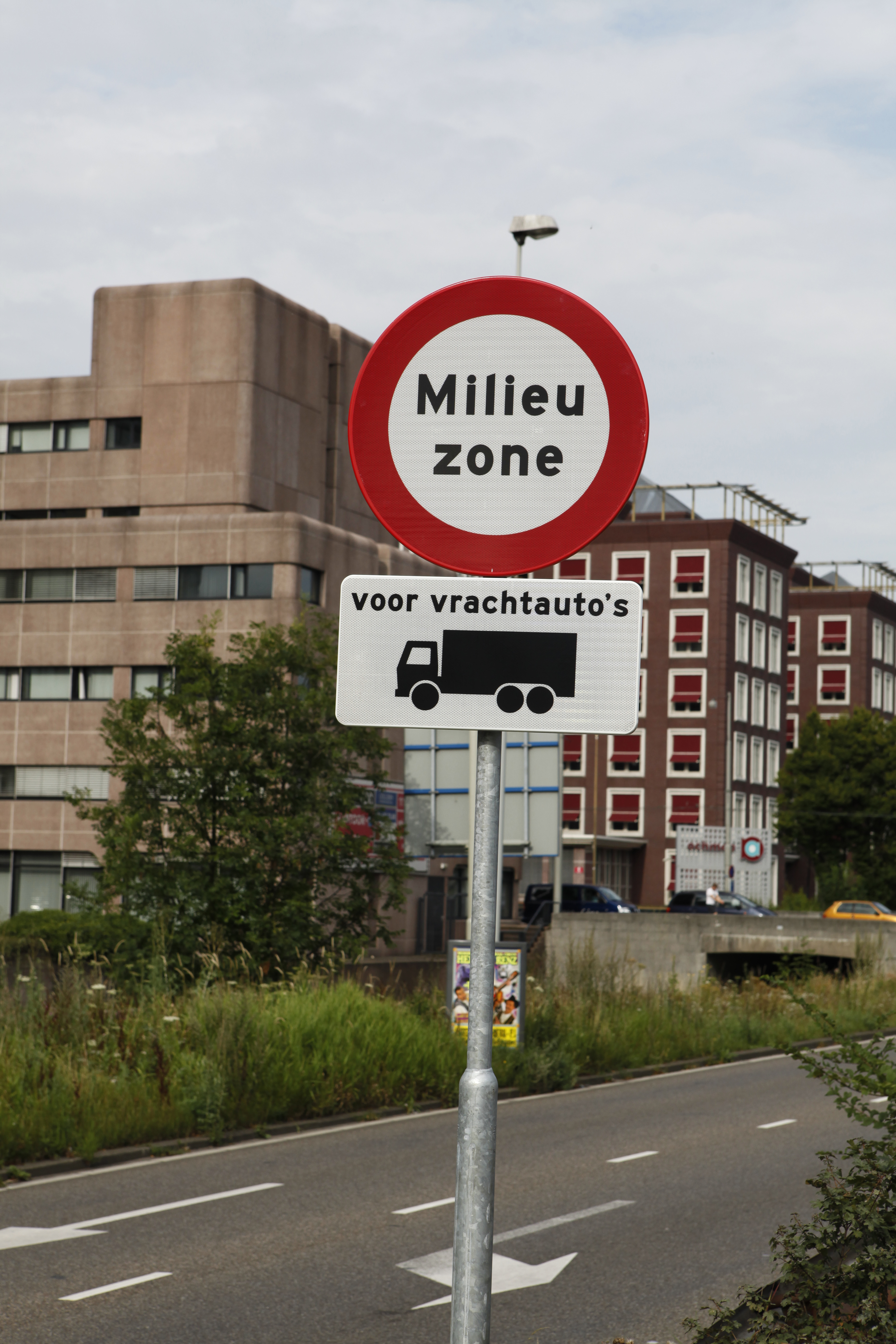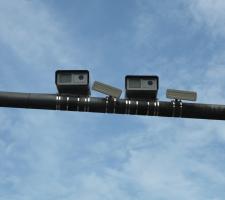
Amsterdam City Council has chosen to move away from manual enforcement of its environmental zone, which is intended to keep highly polluting goods vehicles out of the city centre, and is installing an automated, ANPR-based system.
The signs are not much to look at: white with a red circle and the all-important word Milieuzone ('Environmental zone'). But these signs mean that Amsterdam's city centre is strictly off-limits to polluting goods traffic. At the moment compliance is monitored by special wardens who carry out random checks but in the near future the task will be taken over by cameras developed and supplied by Dutch companyThe cameras' introduction represents a new phase in the effort to improve air quality. Amsterdam's environmental zone officially started on 9 October 2008 when the Milieuzone signs were erected. Project Manager Herman Algra at the Traffic and Transport Infrastructure Department of Amsterdam City Council: "That day had quite a long history behind it. Back in 2007, the City signed an 'Amsterdam Convenant' with the business community, agreeing the plans for an environmental zone. In 2008 we signed a 'Covenant to Encourage Clean Goods Vehicles and Environmental Zoning', which other municipal authorities had agreed in 2006.
"The air quality in Amsterdam and other cities was in urgent need of attention. Particularly in the inner city area, measurements indicate that NO2 and particulate pollution exceed European standards."
A closed cordon
Detailed calculations showed how large the environmental zone had to be in order to achieve the desired effect. This resulted in a conveniently defined area: to the east, south and west the environmental zone is enclosed by the A10 ring road. To the north, the River Ij forms a natural boundary. "These limits made it relatively easy to define a closed cordon," says Algra. "Essentially we had to consider the exits and tunnels from the A10 - 38 locations in all. We defined these boundaries in close consultation with the business community. This was essential in order to gain adequate support. I was struck by how cooperative the business community was."Out of bounds
The environmental zone is out of bounds to goods vehicles with Euro0 or Euro1 diesel engines (any vehicle heavier than 3,500kg is considered a goods vehicle). Goods vehicles with Euro2 or Euro3 engines are only allowed in if they have a soot filter, although in certain cases goods vehicles may receive a temporary exemption. These standards will be further tightened as of 1 January 2010.Since January of this year, special council wardens have been supervising compliance with the ban. "They are now able to tell pretty quickly which goods vehicles are breaking the rules," Algra explains. "Using a PDA or handheld computer they can enter a registration number, whereupon the Department of Transport tells them whether or not the vehicle is polluting. If they are, the wardens issue an on-the-spot fine."
Time to automate
A decision of the City Council in June 2008 had already decreed that foot patrols to enforce the system would be a temporary measure only. The use of special wardens is expensive and therefore Amsterdam's City Council took the decision to become the first municipal authority in the Netherlands to change over to automated supervision. Prior to putting the project out to tender, the local authority defined a number of functional requirements for a system capable of capturing the registration number (licence plate) details of passing vehicles. Strategic adviser Peter Bor from the Amsterdam Engineering Department explains: "One of the requirements concerned the hit rate: the percentage of passing vehicles whose registration numbers are actually recorded by the cameras. We stipulated a minimum of 80 per cent. An equally important criterion was the reading accuracy of the cameras. We tolerate a maximum deviation of no more than 0.02 per cent. It is downright infuriating if the wrong vehicle owner gets a fine."
Amsterdam City Council had other, additional requirements. The installation of the cameras was to cause as little disruption to traffic as possible. In the price analysis, maintenance costs for the next seven years were also taken into account. In the end, on 20 February this year, the contract was awarded to Gatsometer as it presented the most cost-effective bid. The order, in total, was for 53 cameras in 38 locations.
Promised hit rate
"Gatsometer was not only able to guarantee the required accuracy, but also promised a hit rate of no less than 95 per cent," recalls Bor. "That is substantially more than the 80 per cent we demanded. We are talking about a large number of vehicles - in time, the cameras are expected to record about a million vehicles per day. Gatsometer will also provide maintenance for seven years. In doing so, it takes on many of the risks of this new project. This gives us, the customer, security and control over the costs."Images of the vehicles are stored on a hard disc linked to the camera. The vehicle registration data (which is encrypted for security reasons) is transmitted wirelessly to the back office of the City Surveillance Service (Stadstoezicht). There, it is checked against the Department of Transport database so that any drivers breaking the rules are quickly identified. Only the images of these vehicles are then sent by the camera system to the back office. This greatly reduces the volume of data traffic. The other images are automatically deleted for privacy reasons.
Positive trend
"We are seeing a positive trend" says Project Manager Algra. "Random samples show that around 80 per cent of the goods vehicles in Amsterdam are now fulfilling the current emission standards. This represents a significant improvement, as before the environmental zone came into being nearly a third of all goods traffic was in breach of the rules. The cameras will go live this August and we will be able to determine the impact they have had after a month or two. Nevertheless, we are confident that Amsterdam's air quality will improve even further."
Loopless Trigger Radar
The Non-Invasive Detection (NID) camera systems to be deployed in Amsterdam will use Gatsometer's Loopless Trigger Radar (LTR) technology, which projects a virtual loop onto the road surface. The system greatly facilitates installation as there is no need for civil engineering work in the live lanes - one of the City Council's stipulations was that system implementation should cause as little disruption to traffic as possible.
A vehicle within a loop's footprint is continuously measured and the output from these measurements is sent to the NID unit. The trigger (or photo) point is in the centre of the footprint but can be adjusted according to the local and legal situation - for example, for a red light running application the trigger point might be before, on or after the stop line.
Gatsometer's NID systems are configurable and can detect up to four lanes and approaching or receding traffic; one Gatsometer GTC-GS11/GS2 digital camera system can detect up to four lanes.
The NID system is used all over the world for traffic management and has been has been approved by the Netherlands Measurement Institute (NMi) for Traject Controle (point-to-point measurement) applications in the Netherlands.
The central system consists of a server and a web-based software package developed by Gatsometer which handles the communication with the cameras. This software enables the local system to be controlled very easily. The images of the vehicles are stored locally. Each camera is equipped with a modem, a processor and a hard disc storage device.













